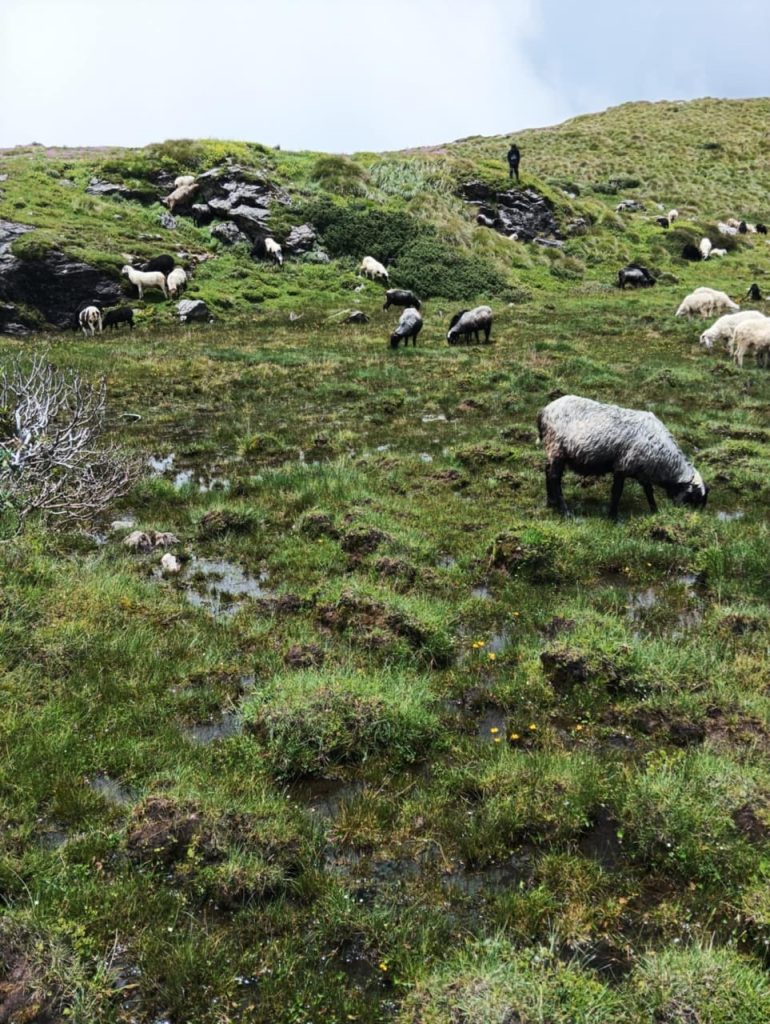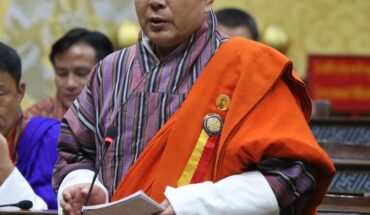
Modernization and urban migration are pulling the younger generation away from the herding life
Til BDR GHALLEY| Samtse
In the misty hills of southern Bhutan, a centuries-old rhythm continues to define the lives of nomadic sheep herders. Every year, communities from Tashichholing Dungkhag in Samtse lead their flocks along rugged mountain trails, moving from lowland valleys in winter to high-altitude pastures in summer.
Yet modernization and urban migration are pulling the younger generation away from this traditional livelihood, placing its future in jeopardy.
Every year, four herding groups—Norgaygang, Pemaling, and Namgaychholing gewog —undertake this seasonal migration. “They travel to higher altitudes in summer and return to the lower valleys in winter,” said Jhelan Ghalley, a 34-year-old native from Pemaling Gewog. “Each group manages around 200 to 400 sheep that follow this pattern annually.”
For families like those of Durga Singh Gurung, a shepherd from Pemaling with three decades of experience, sheep herding is not just an occupation—it is a heritage passed down through generations. “I have 250 sheep, and five herders help me look after them,” Durga Singh said. “We start our journey from Pemaling in January. By June, we reach the destination and stay there for about 21 days. Each of the four groups takes turns staying there for 21 days.” By September, the herders begin their return journey, completing the seasonal cycle by the end of the month.
Sheep provide both livelihood and cultural identity for these communities. “Our livelihood depends on them,” Durga Singh said. “We sell wool to locals, sometimes sell sheep, and also make butter. Unlike cows, mostly sheep can be milked only after December.” Wool is prized for its warmth and durability, used in traditional garments, while butter is sold in local markets. Despite this, the income is modest and seasonal, leaving herders financially vulnerable.
Buday Ghalley, a herder from Namgaychholing, highlighted the difficulties of the migratory lifestyle. “We face a lot of difficulties while traveling. It would be a great help if the government could provide materials like plastic sheets to make temporary shelters. We would also be grateful if they could provide salt for the sheep,” he said. The monsoon months, he added, are particularly challenging due to insects, leeches, and the threat of wild predators.
Nomadic herders face multiple threats, including predation, disease outbreaks, and shrinking pasture land. Disease-related mortalities occur occasionally, but investigations are rare due to the herds’ distant locations. Shrinking traditional grazing routes have also increased pressure on pasture resources.
“The challenges are many, but we do what we can whenever herders come near settlements,” said Loknath Pradhan, livestock officer at Pemaling Gewog. “At the gewog level, livestock staff provide occasional health services such as treatment, vaccination, and deworming. Due to their remote migratory routes near the northern borders, continuous veterinary follow-up is difficult.”
Last year, the dzongkhag administration provided essential gear, including gumboots, sleeping bags, flashlights, and tarpaulins, to improve mobility and living conditions during migration. Despite these efforts, there are currently no specific incentive schemes at the gewog level to attract younger generations to the demanding lifestyle of sheep herding.
The declining interest among youth is a major concern for the community. “The younger generation is not interested. They prefer to look for jobs in towns,” Durga Singh said. Without new herders, the centuries-old practice risks fading within a generation. He suggested that linking sheep farming to income-generating activities such as wool processing, local product branding, and improved market access could help make herding more attractive to younger members.
From a broader perspective, sustaining nomadic herding is critical not only for livelihoods but also for maintaining Bhutan’s ecological balance. Rotational grazing prevents overuse of pastures, preserves biodiversity, and maintains soil fertility. The herding communities contribute to the cultural and environmental integrity of southern Bhutan, making their survival vital to both local identity and the broader ecosystem.
“Government support has been targeted at both economic and welfare measures. Basic rations are provided to nomadic herders, while dzongkhag and central agencies have ongoing and future initiatives to support communities residing in strategically sensitive border areas,” said Loknath.
Yet livestock officers emphasize that more systematic programs are needed. “More needs to be done to make sheep rearing sustainable, including incentives for younger generations and better infrastructure support,” Buday said.
In addition to challenges posed by predation, disease, and shrinking grazing land, herders face logistical difficulties during seasonal migration. Long hours of walking, carrying supplies, and protecting the flocks from natural hazards demand resilience and adaptability. “It’s not easy to protect our sheep,” Buday said, describing encounters with wild animals and harsh weather conditions during monsoon months.
Herders play a critical role in preserving traditional knowledge. Generations have lived by the movement of their flocks, passing down herding practices, migration routes, and seasonal timing. This knowledge ensures efficient use of pastures, sustains livestock health, and maintains harmony with the local environment.
“The government is trying to help,” Durga Singh said. “But we can only continue if more support comes our way. This is our life. It’s not easy, but it’s what we know and love.”
While there are no immediate plans at the gewog level to strengthen the herding community, awareness programs and skill-building for younger members are considered essential for sustaining the practice. Linking herding with modern market mechanisms, improving shelter facilities, and ensuring veterinary support are among the measures suggested to help these communities maintain their way of life, Loknath Pradhan added.
For these communities, sheep herding remains a cultural legacy as much as an economic activity. Songs, rituals, and seasonal movements tied to the flocks continue to shape the rhythms of rural life. Yet, as Bhutan undergoes rapid modernization, these traditions are increasingly under threat. Without targeted interventions, improved infrastructure, and active youth participation, nomadic sheep herding faces an uncertain future.
As winter winds descend on Sipsu’s valleys, the herders of Tashichholing will once again gather their flocks and begin the long walk toward the mountains. Their seasonal migration continues to define Bhutan’s rural identity, connecting communities to their heritage and preserving a centuries-old practice that has endured through generations.





